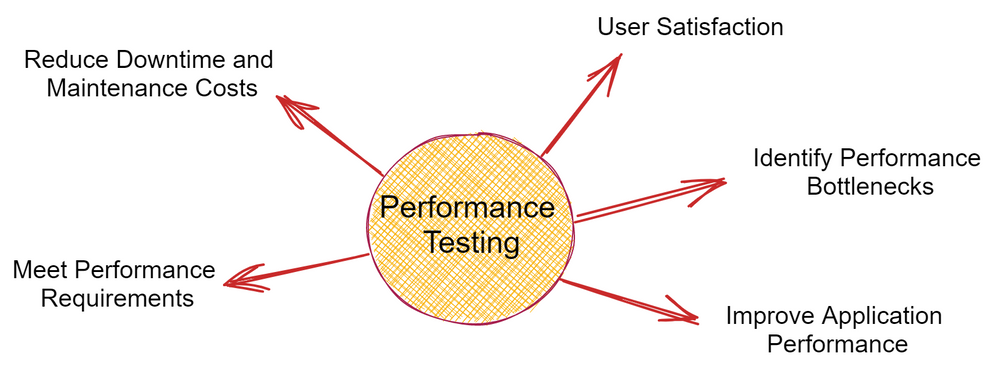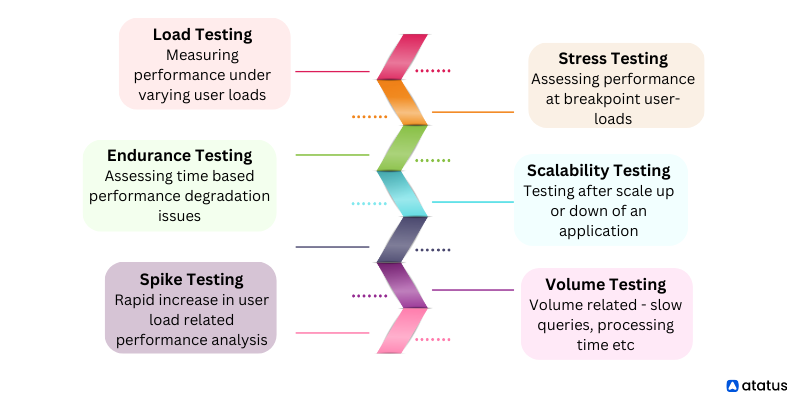Unleashing the Power of Performance Testing: Guaranteeing Your Software’s Success
Introduction
Performance testing is a crucial aspect of software development that assesses how an application performs under various conditions. It helps ensure that your software can handle the load and deliver a smooth user experience, even during peak usage. In this blog post, we’ll delve into the world of performance testing, exploring its significance, key types, best practices, and The real-world impact of Performance testing.
Why Performance Testing Matters?
Imagine you’re launching a new e-commerce website right before the holiday season. You’ve invested months of hard work into designing a user-friendly interface and adding exciting features. The big day arrives, and your website encounters performance issues due to a sudden surge in traffic. Customers can’t make purchases, and they quickly abandon your site in frustration. This scenario is a nightmare for any business owner, but it’s avoidable with proper performance testing.
Performance testing helps us assure:-

Types of Performance Testing
Load Testing: Load testing evaluates how an application performs under expected load conditions. It helps identify performance bottlenecks, such as slow response times or server overloads, ensuring your software can handle the anticipated user traffic.
Stress Testing: Stress testing takes things up a notch by pushing an application beyond its limits. It aims to determine how the system behaves under extreme conditions, uncovering vulnerabilities and weaknesses that might lead to crashes or downtime.
Scalability Testing: Scalability testing assesses your application’s ability to scale horizontally or vertically as demand increases. It ensures that your software can grow seamlessly without compromising performance.
Spike Testing: Spike testing simulates sudden spikes in user traffic, such as those caused by marketing campaigns or flash sales. It verifies if your system can handle these surges without crashing or degrading performance.
Soak Testing: Soak testing involves running an application under a sustained load for an extended period to identify memory leaks, resource leaks, or performance degradation over time.

Best Practices for Effective Performance Testing
Define Clear Objectives: Begin by establishing clear performance goals and objectives. What are you trying to achieve with the test? What metrics will you measure, and what’s an acceptable threshold for performance?
Realistic Test Environment: Ensure your test environment closely resembles the production environment, including hardware, software, and network configurations. This ensures that the test results mirror real-world conditions.
Test Data Preparation: Use realistic data for your tests, as this can significantly impact system behavior. Dummy data may not accurately represent the complexities of actual usage.
Vary Load Scenarios: Test your application under different load scenarios, including peak usage, normal usage, and unexpected spikes in traffic. This helps identify weaknesses and bottlenecks under various conditions.
Monitoring and Profiling: Implement robust monitoring and profiling tools to capture performance data during testing. This data is invaluable for identifying performance issues and making improvements.
Continuous Testing: Don’t limit performance testing to a one-time event. Integrate it into your software development lifecycle, performing tests at various stages to catch issues early and prevent them from accumulating.
The Real-World Impact of Performance Testing
To truly appreciate the importance of performance testing, let’s dive deeper into its real-world impact:
E-Commerce Success Stories: In the competitive e-commerce world, websites and apps must handle massive traffic loads, especially during holiday sales. The absence of performance testing can result in lost sales and customers turning to rival platforms. In contrast, businesses prioritizing performance testing can smoothly navigate high-traffic seasons and emerge as success stories.
Banking and Finance: Financial institutions rely on software to process transactions, handle customer data, and provide real-time services. The consequences of a performance failure can include financial losses, regulatory violations, and a loss of customer trust. Robust performance testing helps ensure these systems remain secure, responsive, and reliable.
Gaming Industry: In the gaming world, performance is everything. Gamers demand seamless experiences with minimal latency. Game developers who rigorously test their titles for performance can avoid frustrating crashes, laggy gameplay, and negative user reviews.
Healthcare and Telemedicine: With the rise of telemedicine, software performance has a direct impact on patient care. Slow or unreliable applications can lead to delayed diagnoses and treatment, posing significant risks to patient health. Performance testing ensures that healthcare software operates flawlessly, especially during critical moments.
Public Services: Government agencies and public service providers increasingly rely on software applications to deliver essential services. Performance testing is crucial to guarantee that services such as online tax filing, driver’s license renewal, and public transportation apps function smoothly, improving citizen satisfaction and reducing administrative burdens.
Conclusion
In today’s hyper-competitive digital landscape, performance testing is not just a luxury; it’s a necessity. It’s the key to ensuring that your software shines, delivering a flawless user experience, and building trust with your customers. By following best practices and integrating performance testing into your software development lifecycle, you can transform your software into a star performer that stands out in the crowd. Don’t wait for a disaster to strike; invest in performance testing today and reap the rewards of high-performance software.



